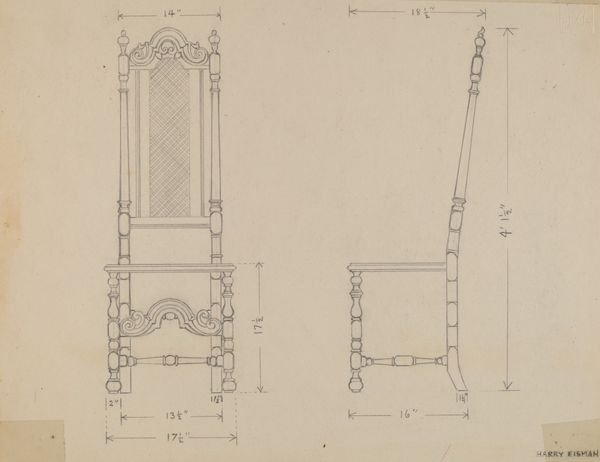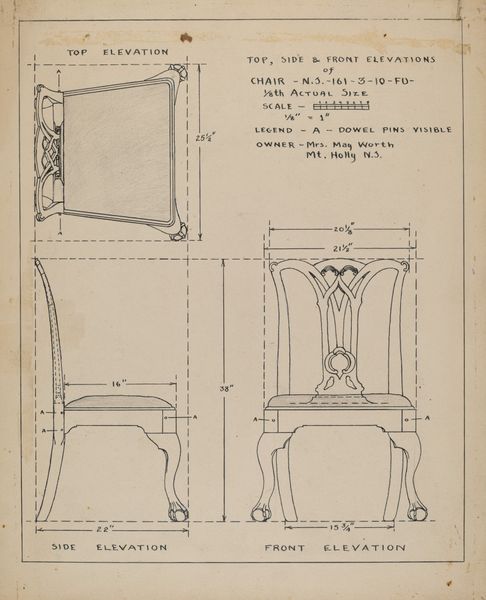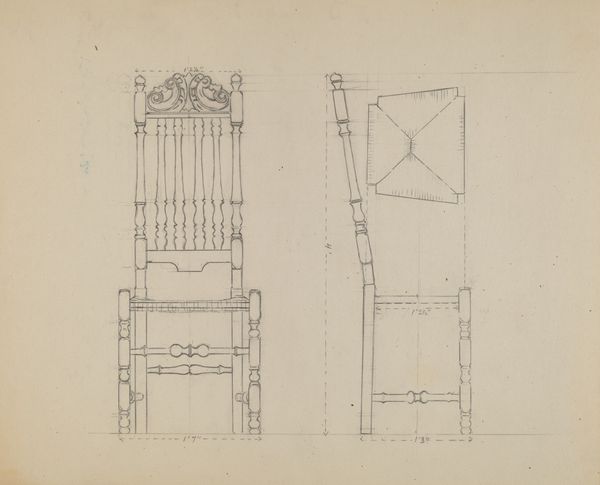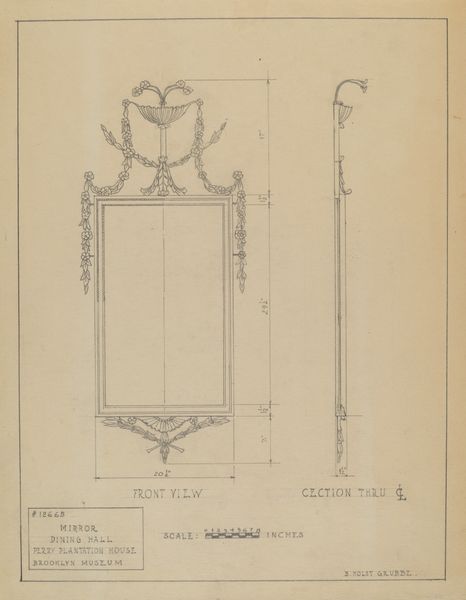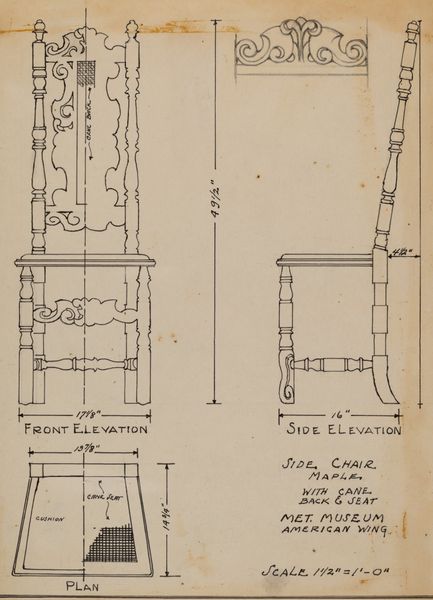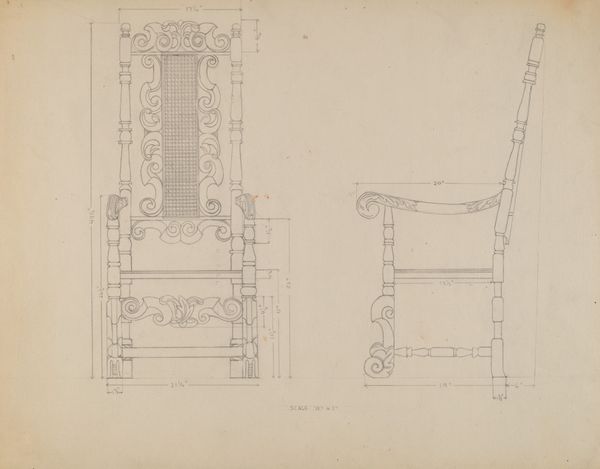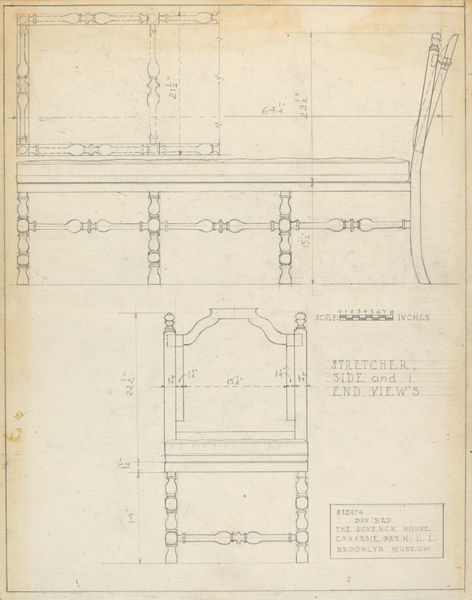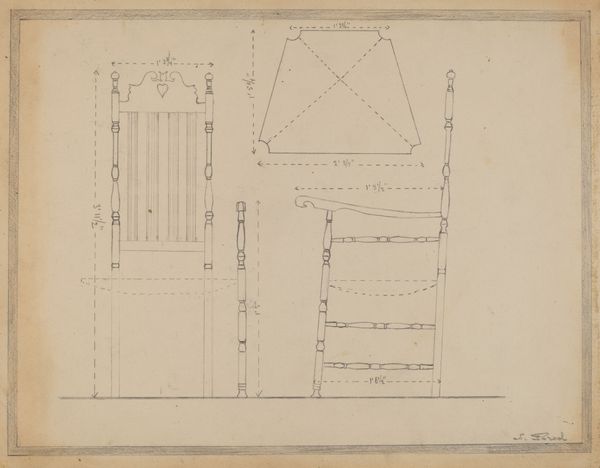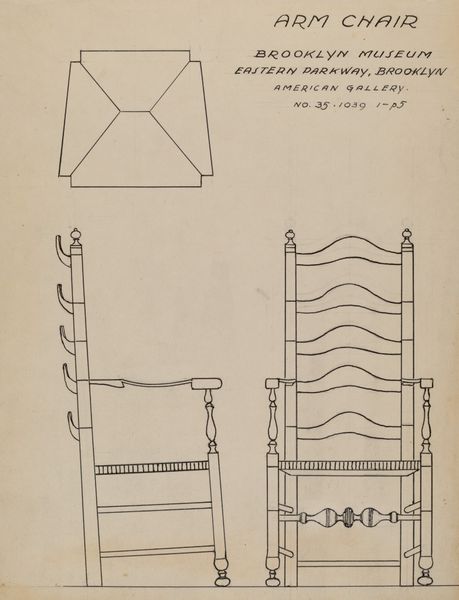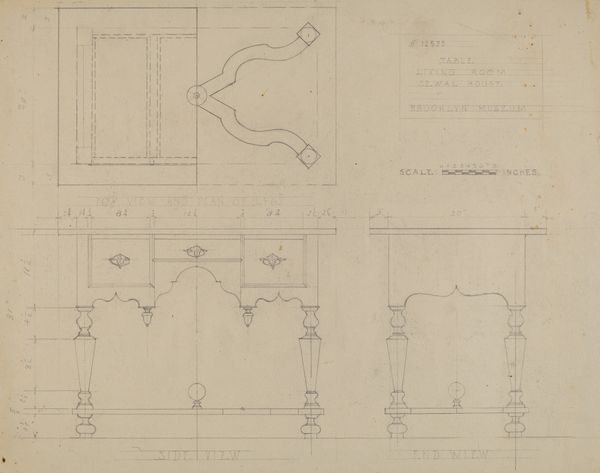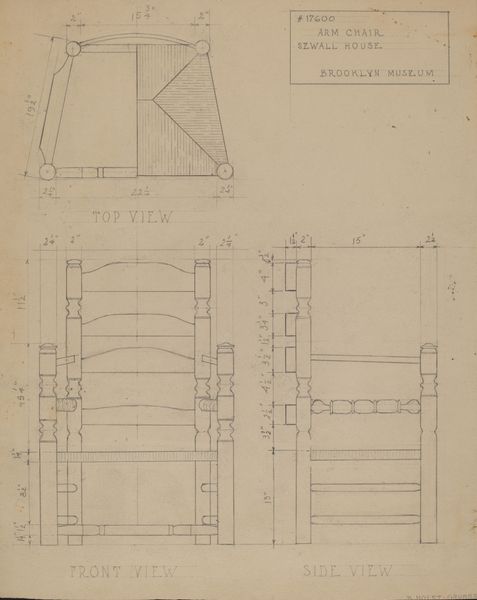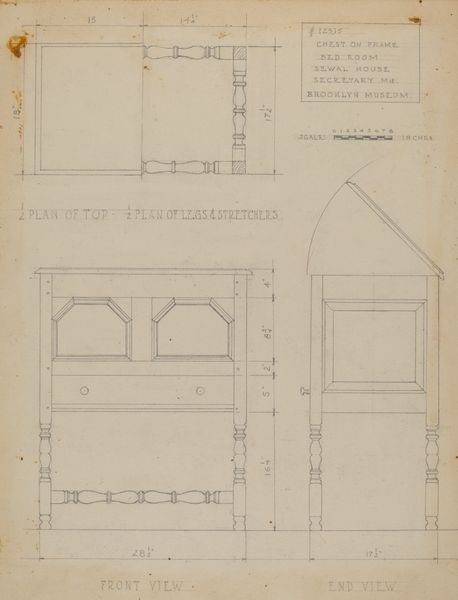
drawing, pencil, architecture
#
architectural sketch
#
drawing
#
aged paper
#
toned paper
#
sketched
#
sketch book
#
form
#
personal sketchbook
#
idea generation sketch
#
sketchwork
#
geometric
#
pencil
#
technical sketch
#
storyboard and sketchbook work
#
architecture
Dimensions: overall: 27.1 x 20.8 cm (10 11/16 x 8 3/16 in.)
Copyright: National Gallery of Art: CC0 1.0
Editor: This is a drawing entitled "Chair," created by B. Holst-Grubbe between 1935 and 1942. It's rendered in pencil on what appears to be toned paper, depicting the front, side, and seat plans of an ornate chair. It looks like an architectural sketch. What can you tell me about the symbolism behind this type of drawing? Curator: This sketch presents a chair not just as a functional object, but as a vessel laden with cultural meaning. The intricate ornamentation, captured with precise detail, echoes the aspirations and values of its time, a longing for permanence and order perhaps. Holst-Grubbe, by meticulously detailing these designs, is participating in a dialogue with history, isn't she? How does that dialogue speak to you? Editor: I see what you mean, the detail is fascinating. So the ornate carvings, they're not just decorative. They carry the weight of tradition? Curator: Precisely! Each curve, each flourish becomes a visual echo of the past. We can almost hear the whispers of bygone eras embedded in the wood itself. And think about the act of drawing itself. Is it about preserving an object or immortalizing an idea? The act of sketching is a record and it speaks volumes. Editor: It's almost like the sketch itself becomes a kind of relic, capturing not just the form but the intention behind it. It is interesting how design acts like language through forms and patterns. Curator: Indeed! Through such symbolic renderings, we tap into a deep well of cultural memory, rediscovering shared connections across time. Perhaps these drawings show how symbols retain their emotional and psychological resonance. It truly shows us that material culture reflects cultural values and patterns. Editor: I never considered the emotional resonance an architectural sketch might carry. Now, I have a greater appreciation for these nuanced details. Curator: And that appreciation unlocks a richer understanding of ourselves.
Comments
No comments
Be the first to comment and join the conversation on the ultimate creative platform.
